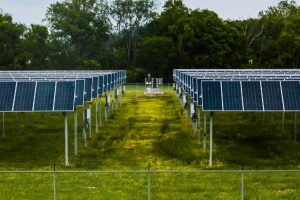The Importance of Renewable Energy


Renewable energy is one of the best ways to save money on electricity bills. While oil prices can change daily, they generally remain relatively stable when you use renewable energy. Unlike traditional technologies, which require fossil fuels, renewable energy is not subject to fluctuating prices and does not require fuels to be produced.
Biomass
Biomass is a renewable energy source derived from organic matter. It contributes to the world’s energy supply, is carbon neutral, and is a sustainable alternative to fossil fuels. It can be used to produce electricity, heat homes, and produce transport fuels. Increasing biomass production and use are suitable for Europe’s energy mix, create jobs, and reduce greenhouse gas emissions. The most extensive use of biomass is in the heating and cooling industry, which consumes seventy percent of all biomass.
Biomass has great potential as a renewable energy source, but many challenges remain to harness its full potential. These challenges include biomass harvesting, drying, and extracting oil and carbohydrate feedstocks.
Wind power
Wind power is a renewable energy source that produces electricity without a fuel source. However, certain factors must be considered before establishing a wind farm. The first factor is the amount of wind available at a given location. In addition to wind speed, other factors to consider include the distance between wind turbines and transmission lines. In addition, the number of wind resources available for wind farms will determine the cost of wind energy generation.
Wind power is an essential renewable energy source for several reasons. First, it helps meet the demand for electricity in many areas. Second, wind energy can be used to power homes and businesses. Third, wind energy is an environmentally friendly, renewable energy source. Finally, it reduces greenhouse gas emissions and can be used as a substitute for fossil fuels.
Solar power
Solar power is a growing alternative energy technology that offers many benefits, including reduced costs and increased efficiency. Its advantages over other alternative energy sources include its sustainability and environmental friendliness. In addition, solar energy is free and renewable, and a finite amount of resources does not limit it. For example, the sun can provide enough energy to power the world for an entire year within an hour. Another benefit of solar energy is that it can be produced on large areas of land that are underutilized today.
A solar panel can provide electricity for an entire home. Unfortunately, the raw materials for solar panels are not cheap, and they are often hard to obtain in large enough quantities. In addition, the sun is strongest from the south, which makes it essential to place most windows on the south side of the house.
Hydroelectric plants
Hydroelectric plants are crucial to the renewable energy industry for several reasons. They can be used as electricity sources during fluctuating demand, and they are more flexible than other renewable energy sources. In addition to these benefits, hydroelectric systems contribute to drinking water storage.
Hydroelectric plants also help reduce electricity costs by producing durable, low-cost electricity. They can also store energy in times of high demand, making them an essential component of renewable energy. In the United States, hydropower is a thriving industry that supports a variety of industries, including manufacturing, utilities, environmental science, water management, and trade and transportation.
Solar thermal energy
Solar thermal power plants utilize heat from the sun to generate electricity. They consist of a system of solar collectors and a heat-transfer fluid. The fluid is heated by solar radiation and turns a turbine into a power plant. The turbine then converts the mechanical energy into electricity. It is important to note that solar thermal power plants aren’t the same as wind turbines.
High-temperature solar collectors focus sunlight through lenses and mirrors. These systems are generally used to produce electricity and satisfy heat needs in industries. They are highly efficient and do not require a lot of lands.
Photovoltaic (PV) cells
Photovoltaic (PV) cells work by converting sunlight into electricity. When photons hit a semiconductor with enough energy, they can excite the electrons, making the material a conducting material. These panels produce electricity in large quantities, but their production is intermittent. To meet the demand for electricity in an electric grid, PV cells must be supplemented with storage batteries and inverters.
PV cells can use a variety of materials to create electricity. Among these materials are copper indium gallium diselenide (CID), cadmium telluride (CTO), perovskites, and organic compounds. For most applications, cost efficiency is the key to success. In addition to cost efficiency, policy incentives like feed-in tariffs, capacity rebates, and net metering often support PVs.

